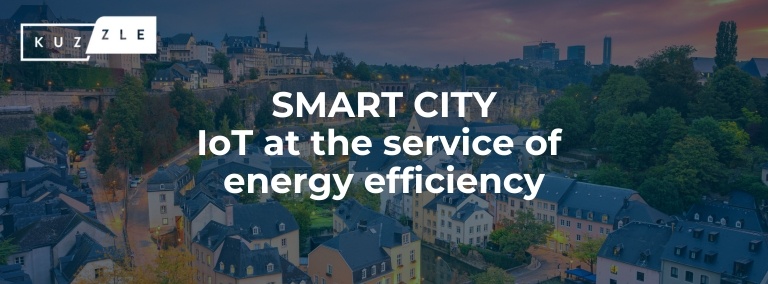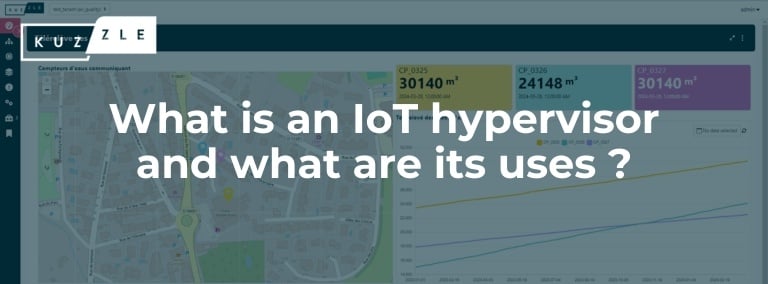The current upheavals in the IoT market and Sigfox's recent setbacks have shown just how essential it is to rethink our approaches, move away from siloed organizations and prioritize open solutions.
Use cases now drive technical and technological choices. This new paradigm makes the IoT platform the cornerstone of every IoT project. Choosing the right IoT platform is the first step in breaking down existing technical barriers and moving towards total interoperability. We take a look at the most appropriate solutions for combining digital sovereignty, cost and the ability to deliver the data required for the required quality of service.
In summary :
- How do you choose the right IoT platform?
- Total interoperability objective
- Choose an open, agnostic IoT platform
- Low-code IoT platform: what's it all about?
- The different use cases of the IoT
IoT platform: definition
An IoT - Internet of Things - platform is a multi-layer technology that enables granular control of a fleet of connected objects. It centralizes the management of connected objects. Some IoT platforms enable centralized management of multi-brand and multi-network sensors, an essential approach that does away with the need for the platforms supplied with the sensors, which do not have all the functionalities.
An IoT platform collects, stores and analyzes data from sensors, some in real time. As a result, you'll be able to exploit this wealth of information via business dashboards to make the right decisions at the right time, and thus manage your business as closely as possible.
How do you choose the right IoT platform?
L’The aim is not to benchmark all existing platforms to find out which one is the best, but to define your needs and determine the one that best meets them.
It is therefore essential to list the criteria for evaluating an IoT platform according to your needs: where are the data hosted, what is the level of security, is it agnostic: multi-protocol, multi-device and multi-network IoT compatible? Is it an open, flexible solution? And don't overlook the company's organization when making your choice: will a technical team be dedicated to the project, or should you opt for low-code solutions that make it easier for users to get to grips with?
Several criteria are essential to evaluate when choosing your IoT platform:
- Sensors:
A sensor is a device that connects equipment and makes it intelligent via feedback. It measures one or more variables and detects changes in the environment. It sends heterogeneous data, via an IoT network, to an IoT platform for use in business applications. The choice of sensors is crucial to ensure that the right data (temperature, humidity, shock, inclination, etc.) is sent back to the IoT according to your predefined needs. - Connectivity and IoT networks:
The IoT network intervenes between the sensor and the platform. It enables information to be transmitted from the sensor to the IoT platform. Different communication protocols exist (4G/5G, LTE-M, NB-IoT, LPWAN, LoRa, Sigfox), and not all have the same characteristics. To make the right choice, IoT connectivity needs to take into account network coverage, object battery life, communication distance and service cost. - Hosting
You have two main choices when it comes to hosting your IoT platform:
- On-Premise = your IoT solution is installed directly in your in-house infrastructure
- Cloud = the IoT platform provider takes charge of hosting your IoT platform in the cloud. This is the case, for example, with the Kuzzle PaaS platform. The IoT platform editor takes charge of commissioning, hosting and managing your IoT platform in the cloud for immediate online use. - The IoT solution:
IoT platforms enable you to collect, process and analyze data from connected equipment and render it in the form of business applications. Favoring an IoT platform that is interoperable with all sensor and network technologies will not only facilitate the deployment of IoT projects, but also the overall management of your connected devices, wherever they may be. - Data management and storage
It's important to determine whether you need to process a large amount of data. Depending on your needs, you'll need a more or less powerful platform capable of analyzing a large amount of heterogeneous data from a variety of sensor technologies.
What's more, you need to decide where to store all your data. This is an important point that influences your choice of platform. For an IoT platform with data hosted in France, choose Kuzzle IoT. - Open-Source or proprietary solution
An open-source IoT platform allows you to free yourself from editor's locks by fully owning your application, and having access to the source code so you can customize it and make it evolve according to your needs. A proprietary solution will provide you with a large number of functionalities, but you'll lose everything if you stop using it.
Total interoperability objective
The IoT market in France and worldwide will continue to grow strongly in 2023 and beyond. However, habits die hard. Most IoT projects are still approached from a single angle: one measurement, one telecoms technology, one sensor technology. As a result, projects deployed with proprietary solutions quickly find themselves locked into a communication protocol, limited in their scalability, forcing departments to duplicate projects to meet new needs. As for IoT platform users, they are confronted with connected objects and different protocols that coexist but do not communicate with each other.
The connected home is an emblematic example of this. It was with this in mind that the Matter protocol was born: the new standard unifying connected objects in the home, greatly simplifying the use of home automation devices.
Choose an open, agnostic IoT platform
But while the universal Matter protocol represents a major step forward in interconnecting the whole home, in the BtoB sector, it's impossible to rationalize systems to a standardized protocol. In this field, usage drives technology. Use cases in Smart Building, Smart Logistics, Smart Industry or connected territories, sometimes referred to by the generalized term Smart City, are extremely varied due to the many possible applications.
Rather than taking an iterative, market-by-market approach, or focusing on infrastructure alone, companies, manufacturers and local authorities would do well to concentrate on digital use cases and the possibilities for leveraging measurement results, or even monetizing them, linked to the many sensors and connected objects in place. Choosing the right IoT platform is the first step towards breaking down existing technical barriers and moving towards total interoperability. To achieve this, choose an open source IoT platform. The choice of open source will offer you an open, secure, scalable IoT solution, capable of evolving with your current and future needs. Accessibility to source code gives you flexibility and customization, and frees you from vendor lock-in.
-Mar-25-2025-02-15-43-9180-PM.png?width=920&height=460&name=Design%20sans%20titre%20(1)-Mar-25-2025-02-15-43-9180-PM.png)
Low-code IoT platform: what's it all about?
Today, customers want turnkey projects that demonstrate tangible benefits, cost control and sustainability. It becomes important to demonstrate scalability. Proof of concept should be a leverage, not an end. Few suppliers today are able to meet this customer need, and that is exactly what the market needs to move to the next stage. What if the key was the low code IoT platform?
For some years, IoT platforms with low code tools and plug-ins have been the decision of companies. These user-friendly solutions offer integrated services to help manufacturers optimize the operation of their equipment and reduce the environmental impact of their plants, for example. In addition, these low-code IoT platforms offer an immediately accessible hypervision console offering a real-time multi-business vision, multi-equipment, multi-protocol and multi-device for optimized control. They have demonstrated their ability to connect all use cases, private and public, by integrating good data confidentiality and encryption management with managed security throughout the collection chain. And are seen as sustainable and scalable solutions.
The different use cases of the IoT
The fields of application of IoT are infinite and cover all areas of activity. This new generation of technology offers a very wide range of use cases:
- Smart City: Kuzzle’s IoT platform for connected cities allows communities and territories to manage public lighting, waste, electricity, water consumption and its loss or reduce their carbon footprint. Connect your city and unlock its full potential.
- Smart Building: IoT is effective in improving user comfort in private or public buildings through energy efficiency management, air quality optimization, temperature management, heating or electricity. Discover the Kuzzle IoT solution to manage your connected buildings.
- Smart Logistics: logistics specialists and carriers are fervent users of IoT to geolocate in real time the position of their goods or vehicle on a map, manage their vehicle fleet anywhere in the world, improve their delivery times or even anticipate the arrival times of their goods thanks to Kuzzle IoT & Data prediction.
- Smart Industry: industrial IoT platforms are popular for improving energy efficiency of industrial sites, implement predictive maintenance actions to anticipate outages or manage air quality or temperature on production lines in order to guarantee the well-being of employees on sensitive sites.
Coupled with data science, IoT platforms have become essential tools of technological evolution.
You want to discuss your IoT project with our experts?





